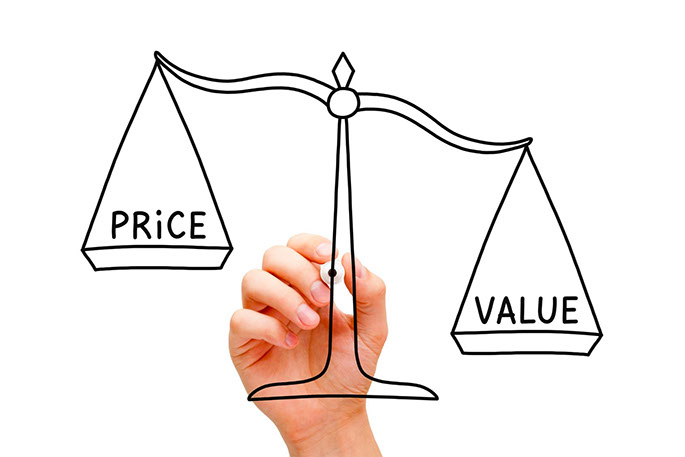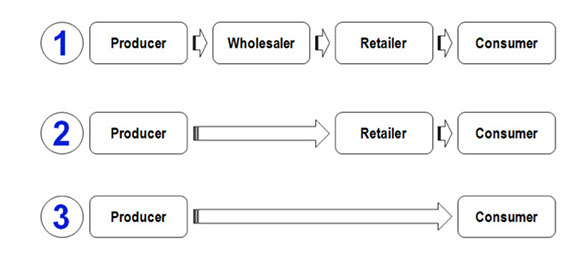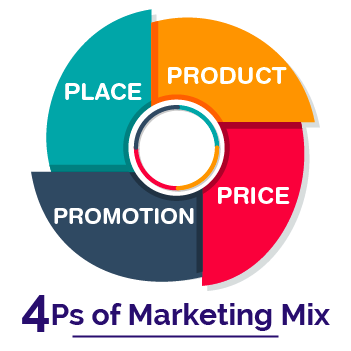Otermans Institute
at Shemford School Patna, Bihar, India
The Basics of Marketing
• Benefits of an ideal marketing mix
• Summary
• Tips & Exercises for the 'lockdown'
Marketing is everywhere, you need to promote a product, a market, a company, a service or even yourself. The definition of marketing is “the action or business of promoting and selling products or services, including market research and advertising.” Most importantly, it doesn’t matter if you have a great product or service if you are not able to market it.
To be able to have a good marketing strategy you need to be in balance. You need to know what the right price is for the product, what the unique selling points are and who your competition is. You need to have an answer to these questions to be able to make the ideal marketing mix. However, where do you start to create this ideal marketing mix?
For this lesson, we will be using a well known theory developed by Edmund Jerome McCarthy which states you need to have four factors to be able to promote your product or service. For the remainder of this lesson we will use the term product, but this encapsulates both products and services. The first factor is the product itself which is followed by the price of the product as the second factor. Thirdly you need to promote the product and finally you need to have a place where you can sell the product. These four things form the four P’s of the marketing mix.
If you thought our content was useful and helped you upscale today, you can leave a donation at the below. All funds collected will be donated to the Prime Minister's National Relief Fund to support Covid-19 victims.
DONATE NOW
5 P’s of marketing
Product
How does your product or service fulfill the needs of the clients? This is the most important question you need to ask yourself. You need to think about the product, but also about its properties; What is the purpose of the product? What is the brand name? What is the quality of the product? How does the product look like?
If you can answer these questions you are able to determine the product.
Price
Of course, the price of your product is crucial. However, the price of the product is not the only thing you need to consider. It is also important to think about your selling price in relation to your target audience and competition. Furthermore, you can think of price reductions for instance by reducing price per item when people buy in bulk and innovative payment methods like allowing customers to pay in installments. There needs to be a balance between the price of the product and the value the product is intending to offer. The customer needs to feel that the quality of your product resembles the price. In that way, your customer is more likely to come back.
Questions you should consider when determining the price are: What price are my competitors charging? How much is my target audience willing to pay? Will I offer reductions when people buy in bulk? What is my desired profit margin and what does this mean for the price of the product? Do I prefer higher single sale profits on one time sales or lower single sale profits with returning customers?

Promotion
Here, it is all about the promotion strategy of your product which can broadly be merchandising, advertisements and relationships with partners and press. The purpose of promotion is that the target audience gets to know your product and considers buying it. For promotion, you can use online and offline marketing, however in today’s market, it is best to combine both for most products to reach a wider audience. With offline marketing, you can think of creating flyers, free samples of products or having a stall at exhibitions and events. For online marketing you can consider website displays, search engine optimization and different social media advertisements; note that different platforms require different types of messaging which will be separately covered by Otermans Institute in a future lesson. Thus, you can ask yourself these questions: Which social media platforms do my target audience use? What sort of messaging is right for my product and target audience? Are there any events where I can promote my product?
Place
The P for place is the location where you sell your product. This is not only the actual on-line or off-line store where you sell your product, but this also includes the distribution channels. It is important to consider how your product arrives to the customer, and which steps need to be taken to accomplish that process in a secure and timely manner. Sometimes, your product visits more places before it arrives to the customer, for instance a store, warehouse or customs if being imported. The questions you need to consider here are: Where will I sell my product? How will I distribute my product? How does my product ultimately arrive to the customer?
The picture below shows some standard distribution channels. Please note that this can vary for each product and market.

There is actually a 5th P that is important to consider – this is about personnel.
Personnel
An important aspect of personnel in relation to your product is customer service. The secret here is to treat your employees how you want your employees to treat your customers. The way people work together, how they are managed or even how they got the job is important. When recruiting, it is recommended to look for people who share your vision and values. In this way, they will be motivated and enthusiastic about their work and the overall ambition of the firm which translates more often than not into high quality customer service. You can learn more about these and people skills in our lesson on team-work.
Ask yourself here: How will I deal with customer complaints? Which people are the right people for the job and how do they align with the company’s values? How to identify good people’s persons? Where and how do I get these people?
Benefits of an ideal marketing mix
- It provides a framework for valuable aspects to consider such as allocation of your financial and human resources.
- It helps to achieve your goals by providing a structure where you are better able to put your company in a great tactical place within the market.
- An ideal marketing mix can increase customer satisfaction which increases repeat business and free publicity.
Summary
To be able to sell a product or yourself you need to have a balanced marketing mix. This mix combines the product, price, promotion, place and personnel. When you have addressed all these topics, you are ready to sell your product and conquer the market and its customers.
Note: No marketing mix is perfect or static. You need to keep improvising on it to improve results and also to align with a constantly moving market.
Tips & Exercises for the 'lock down'
Self: The mix can also work for selling yourself. The focus then is mainly on the P’s of product and promotion. Answer the following questions:
a. Who are you?
b. What are your unique selling points?
c. What are your strong qualities?
d. Where will I promote myself?
e. How will I promote myself?
f. Where will recruiters find me?
If you can answer these questions, build a self marketing strategy and try selling yourself to a friend. Keep in mind that you should also check the lesson on introducing yourself which is an important first step in this process.
Take feedback from this friend, amend the marketing mix based on it where necessary and approach another friend. Take feedback again to check for any improvements.
Family: Determine the marketing mix of a product you would like to sell with your family as a team. This can be a real product or service as part of your own business or start-up. It can also be a product like a cake that you are really good at baking or some products that you would like to get rid of.
Secondly for a service, you can think of how your family can contribute to your local community and present the mix to them for active evaluation, ideation and feedback. Create the final mix together including the points raised by them.
Don’t forget to ask us at Otermans Institute for more suggestions and tips using the form below. We would also love to hear your goals and how you are aiming to achieve them through the same form or via email on lessonsforhumanityqanda@gmail.com
Got queries regarding this article, or want to learn more?
Write to us, and our trainers will get back to you.
Powered by Smatter | Design support by NUTS India
